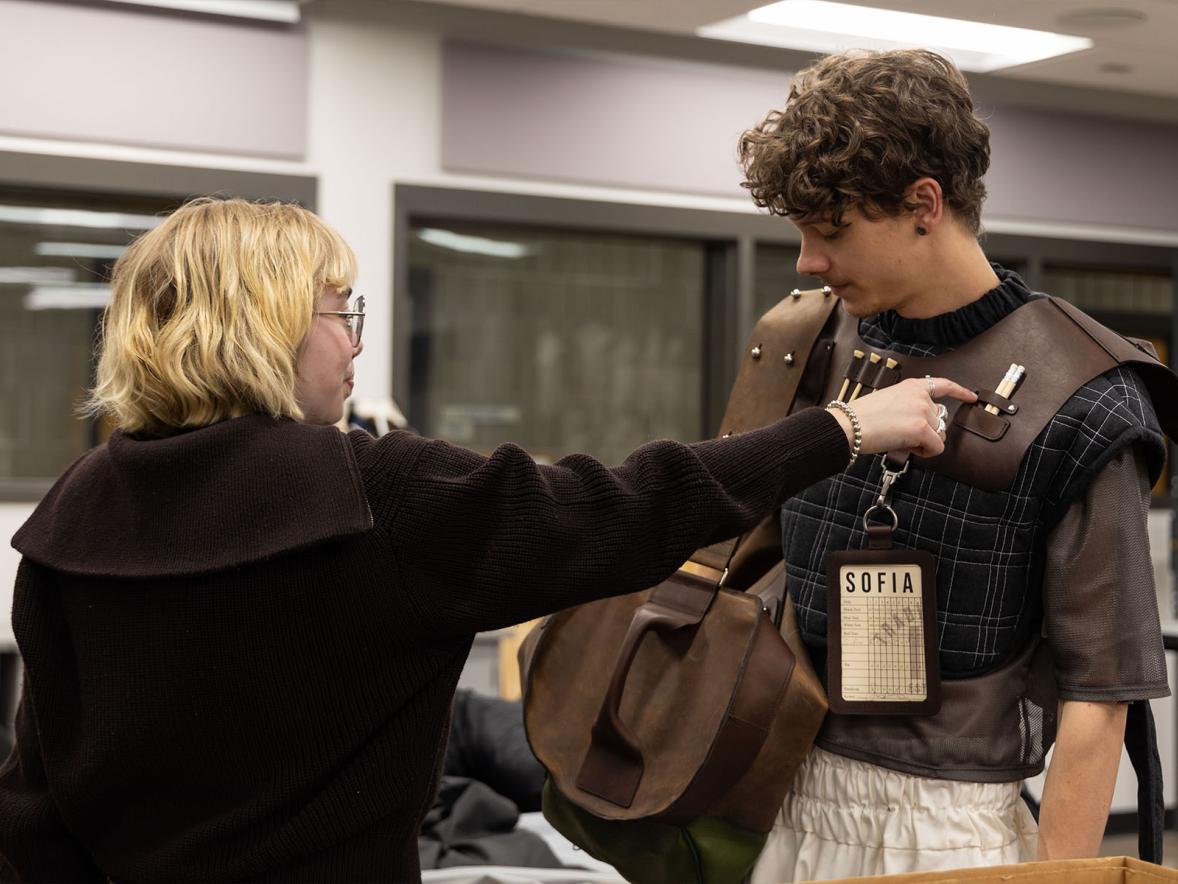Near the banks of Lake Menomin and the lower Red Cedar River, UW-Stout is in the heart of one of western Wisconsin’s largest watersheds.
A new $358,940 research grant from the Freshwater Collaborative of Wisconsin focusing on water quality in the lakes, rivers and streams will extend a path for faculty and students to make a difference in the future of the ecosystem.
The Red Cedar Watershed Monitoring Project was one of three grants UW-Stout received Wednesday, Aug. 16, totaling $463,266. They were announced as part of $4.34 million for 22 projects at UW System schools.
“The overarching goal is to understand the ecosystem processes occurring in the watershed so we can propose more effective management solutions,” said Associate Professor Keith Gilland, director of the watershed project and of UW-Stout’s environmental science program.
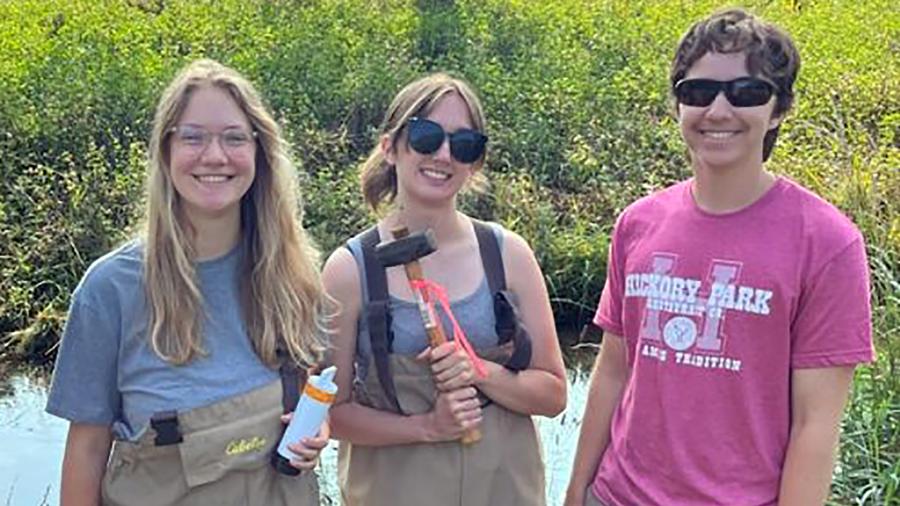
“This funding allows us to do applied research with students and focus on understanding and generating solutions to the biggest problems affecting our region,” he added.
The Red Cedar River watershed includes about 40,000 acres of open water and 4,900 miles of waterways in northwestern and west-central Wisconsin
UW-Stout also received $92,806 for a mathematics-based project to help dry bean growers manage water resources and increase yield; and $11,520 to host two freshwater science field courses, one for juniors and seniors in Wisconsin high schools and one for upper-level college students within the UW System.
In the past two years, UW-Stout now has been awarded $871,220 from FCW.
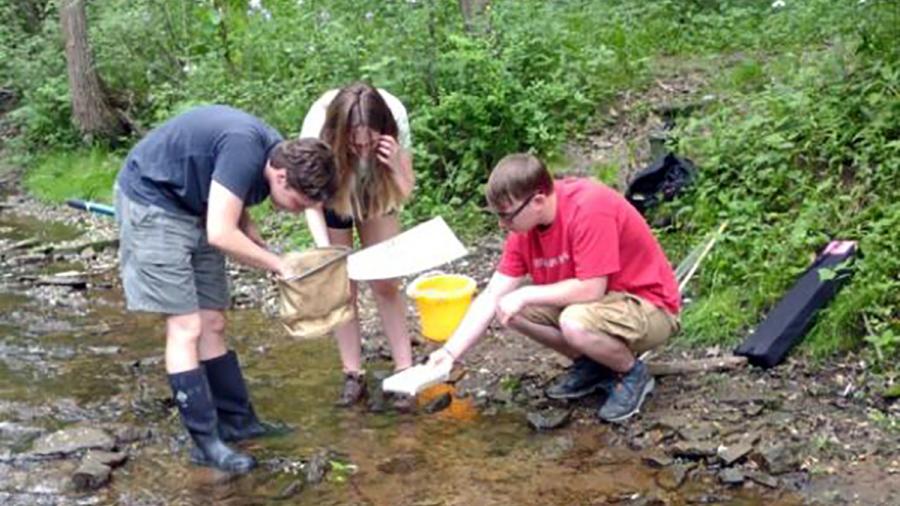
“The Freshwater Collaborative funds have been instrumental in supporting UW-Stout faculty in their research related to clean water, sustainability and restoration,” said Anne Hoeltke, director of UW-Stout’s Office of Research and Sponsored Programs. “In turn, their research, which has been highly and graciously supported by the state, will affect all of us in understanding the importance of our environment and the importance of maintaining it.”
Faculty-led applied research, which directly solves known problems, is one aspect of the experiential learning required in all UW-Stout undergraduate and graduate programs and part of the university’s polytechnic advantage.
Watershed monitoring project
The watershed monitoring project began last summer and continued during the 2022-23 academic year with two previous Freshwater Collaborative grants totaling nearly $162,000.
The new, larger grant will support efforts to examine the effectiveness of previous restoration work and expand efforts to include whole-ecosystem and watershed processes to determine the root causes of the toxic algal blooms in regional lakes, FCW said.
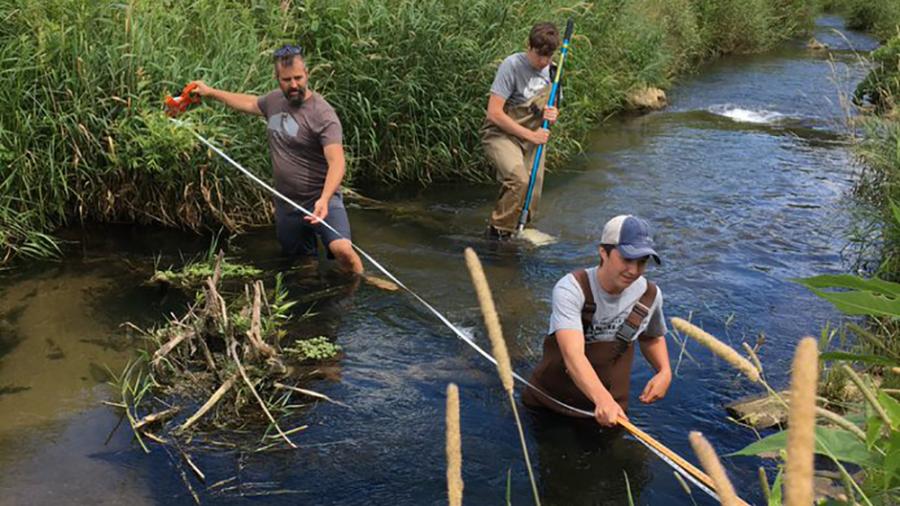
“This funding provides an opportunity to build our brand in environmental science as the ecosystem restoration campus. We look at systems holistically to understand them, and by doing that we can move beyond traditional ‘cookie cutter’ approaches to management,” Gilland said.
Students from UW-Stout and three other UW System schools will survey streams, riparian corridors and wetlands while monitoring lakes Tainter and Menomin to help guide management decisions regarding the watershed to serve as a model for other similarly impacted watersheds throughout the region, according to the grant.
This summer, for example, researchers have sampled water quality weekly in the two lakes to examine the algal bloom. They also have sampled streams to study the long-term impacts of DNR/Trout Unlimited restoration projects on in-stream habitat, water quality and stream biology.
“We've also been working on some projects looking at improvements being made to Galloway Creek (in Menomonie) to lessen erosion as well as projects looking at water conditions in the area under projected future climate change scenarios,” Gilland said.
Working with Gilland will be Lecturer Julia Chapman, Assistant Professor Nicole Hayes and Professor Amanda Little, all from the biology department. Also collaborating, along with the other universities, will be the Dunn County Land and Water Conservation Division.
Understanding the region’s water quality issues “requires a ton of hands-on work, and having all these hands coming from Stout and our partner campuses with differing expertise will get us closer to the level of understanding we need to actually try to solve our problems,” Gilland said.
The professors’ areas of expertise are:
- Gilland, restoration ecology
- Chapman, stream systems, macroinvertebrates, and data analysis and modeling
- Hayes, limnology, microbiology, emerging environmental toxins, environmental biology and lake research
- Little, how groundwater, wetland ecosystems and riparian (river, stream and lake bank) areas affect surface water.
“The big takeaway for me so far is how complicated the dynamics affecting our water quality in this region really are,” Gilland said. “Grappling with all of the factors affecting water quality ranging from watershed land use to in-habitat factors and the changing climate is both very challenging but also super fascinating. I'm looking forward to sitting down with all of our data from this year and last year and really diving into what specific questions we want to focus on moving forward and how we can start to move our research findings into influencing management actions.”
UW-Stout and Little also will collaborate on another new FCW grant involving UW System schools but didn’t receive direct funding.
Since 2014, UW-Stout faculty and students and visiting students have done watershed research through the nationally funded LAKES REU program. Also, the university’s Center for Limnological Research and Rehabilitation is a state and national resource for water quality testing, scientifically analyzing lake sediment in UW-Stout labs and developing treatment plans.
Bean irrigation grant
Like the watershed monitoring project, the nearly $93,000 dry bean irrigation research grant provides another round of funding for a FCW project that began in 2022 with a $36,000 soil moisture monitoring project called Crop Per Drop.
Led by Professor Keith Wojciechowski, UW-Stout faculty and students in the applied mathematics and computer science bachelor’s program will construct automated weather stations and place them in fields.
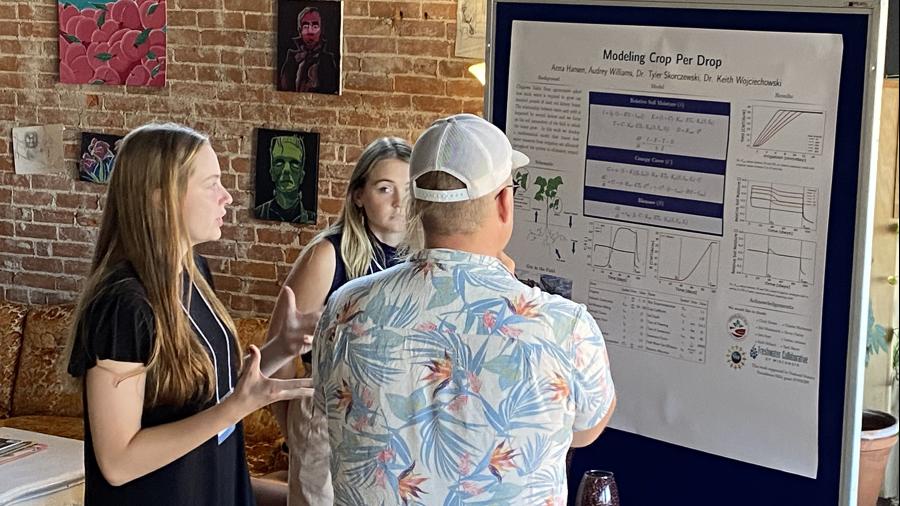
The stations will collect weather- and plant-related data that will be analyzed to help inform the agronomy team at corporate partner Chippewa Valley Bean so it can better advise its growers. The company, based in Dunn County, is the world’s largest producer of dark red kidney beans.
“We will build the weather stations and develop the software to manage them. They will read data from the field that we will use to test best practices, make predictions, and refine the mathematical model we developed using the last round of funding,” Wojciechowski said.
Last year, three students worked on Crop Per Drop and presented their research at two events.
The new project will include professors Saleh Alnaeli, Ahmed El-Magrous and Tyler Skorczewski, like Wojciechowski from the mathematics, statistics and computer science department.
“The current funding brings together a team of computer scientists and applied mathematicians. It truly reflects the interdisciplinary nature of the applied mathematics and computer science program at UW Stout,” Wojciechowski added.
About the Freshwater Collaborative
The Freshwater Collaborative of Wisconsin is a partnership of Wisconsin’s 13 public universities, connecting with industry partners, local communities, policymakers and advocacy groups. Its mission is to establish Wisconsin as a world leader in freshwater science, technology, entrepreneurship and economic growth.
It is training the next generation of scientists to solve global water resource problems through academic programs, collaborative research and career development across the UW System. Learn more at freshwater.wisconsin.edu.
###







